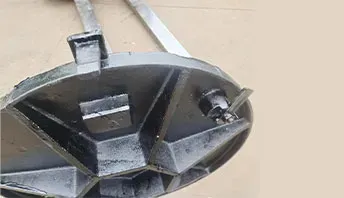Exploring the Importance and Design of Street Bollards in Urban Environments
The Role of Street Bollards in Urban Design
Street bollards are often seen as mere urban fixtures in the modern city landscape, yet their significance extends far beyond mere aesthetics. These short, sturdy posts serve a crucial role in urban design, enhancing safety, organizing pedestrian traffic, and contributing to the overall functionality of public spaces.
Historical Context
The use of bollards dates back centuries, originally designed to secure ships to docks and prevent them from moving away. Over time, their function has evolved, transitioning from maritime applications to urban environments. Today, bollards are prominently utilized to delineate pedestrian walkways, protect infrastructure, and enhance the safety of public spaces. In the hustle and bustle of city life, they become unsung heroes, often overlooked by the very people they protect.
Safety and Security
One of the most critical roles that street bollards play is in ensuring safety
. In an age where cities are facing increasing concerns about vehicle attacks in crowded areas, the installation of robust bollards has become a standard practice. These barriers can effectively prevent unauthorized vehicle access to pedestrian zones, parks, and marketplaces, thereby safeguarding lives.For instance, in cities like London and Barcelona, the implementation of strategically placed bollards has been instrumental in deterring potential threats. With designs that can withstand significant force, these installations are a proactive measure in urban security practices.
Traffic Management
Bollards also contribute significantly to traffic management. By clearly delineating pedestrian walkways from vehicular pathways, they help maintain an organized flow of movement. This separation is crucial in busy urban environments where foot and vehicle traffic intertwine. Well-placed bollards guide pedestrians and cyclists safely, reducing the likelihood of accidents.
street bollards

Moreover, bollards can be employed to control access to certain areas. For instance, retractable or removable bollards allow cities to manage traffic during special events, creating temporarily pedestrian-only zones that enhance the public's experience while exploring urban attractions.
Aesthetic Features
Beyond functionality, street bollards provide opportunities for artistic expression within urban design. They come in a myriad of designs, materials, and colors, allowing cities to align them with their unique aesthetic. Artists and designers often collaborate with urban planners to create bollards that reflect local culture, history, or environmental themes.
Incorporating aesthetically pleasing bollards can transform a dull streetscape into a vibrant urban space. Cities like Melbourne and Paris have creatively employed artwork, adding character and charm to their public areas through specially designed bollards that complement the local architecture.
Environmental Considerations
As cities become increasingly focused on sustainability, the materials used to manufacture street bollards are evolving. Many contemporary bollards are now made from recycled materials or designed to be more environmentally friendly. Additionally, incorporating green elements, such as planters or spaces for climbing plants, can enhance the ecological footprint of urban areas while still serving their functional purpose.
Conclusion
In conclusion, street bollards are invaluable components of urban design that serve multiple functions. They enhance safety, assist in traffic management, provide aesthetic appeal, and contribute to sustainable practices. As cities continue to evolve and respond to new challenges, the design and implementation of street bollards will undoubtedly play a significant role in shaping safer, more organized, and visually appealing urban environments. Ultimately, these seemingly simple structures embody the complexity and thoughtfulness that underpins modern city planning, serving both practical needs and the interests of the community.
-
The Smarter Choice for Pedestrian AreasNewsJun.30,2025
-
The Gold Standard in Round Drain CoversNewsJun.30,2025
-
The Gold Standard in Manhole Cover SystemsNewsJun.30,2025
-
Superior Drainage Solutions with Premium Gully GratesNewsJun.30,2025
-
Superior Drainage Solutions for Global InfrastructureNewsJun.30,2025
-
Square Manhole Solutions for Modern InfrastructureNewsJun.30,2025
-
Premium Manhole Covers for Modern InfrastructureNewsJun.30,2025
